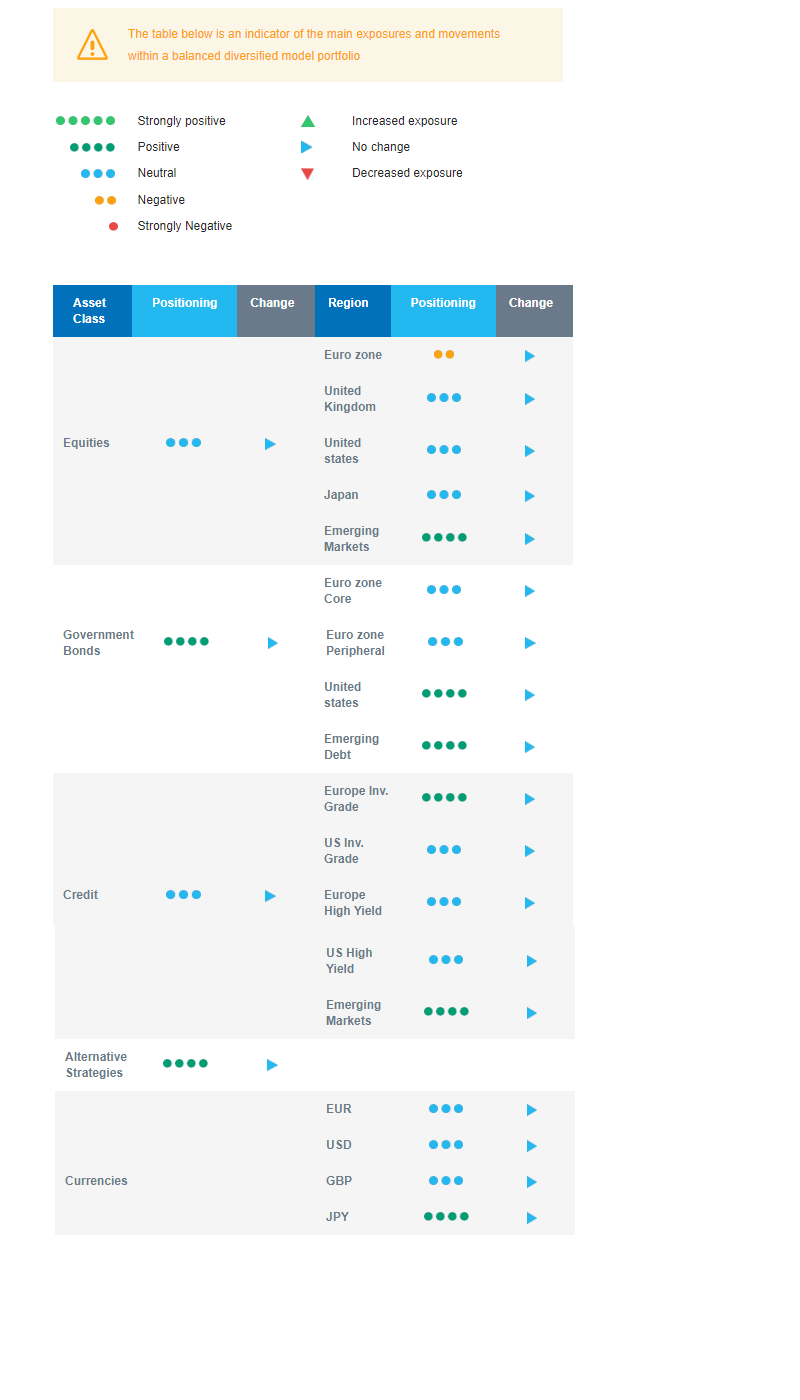Last week in a nutshell
- In the US, the labour market is slowing at a slow pace. As the unemployment rate fell and compensation rose, a Fed hike this month is a fait accompli.
- In the euro area, the survey of consumer inflation expectations showed a welcome decline but have remained robust, cementing the July ECB hike.
- The sharp repricing of upcoming expected monetary policy decisions at the start of Q3 pushed bond volatility higher and global equity markets lower.
- China’s EV car sales were pushed up as 15 car manufacturers offered sharp rebates to shore up demand.
What’s next?
- Inflation will be in focus with publications in the US, some Euro Area members and in China. In the US, the consensus is expecting a sharp drop in headline CPI towards 3% YoY.
- Industrial production data coming from Europe and some emerging countries will be released, testing countries’ international competitiveness and ability to shake off the manufacturing slowdown.
- The UK will publish a series of data on its labour market, including average earnings, GDP and balance of trade as its central bank faces a stubbornly sticky inflation and a slower transmission of its policies.
- The Q2 2023 earnings season will kick off with US big banks and on the geopolitical scene, the NATO's summit in Vilnius will include discussing Ukraine's potential membership path.
Investment convictions
Core scenario
- During the second half of 2023, we expect a less supportive market environment than in H1 when financial markets were resilient, reflecting a better growth/inflation mix than expected by consensus at the start of the year.
- The month of June has seen central banks from Australia, Canada, England, Norway to the euro zone and the US add more tightening, via rate hikes and rhetoric.
- The gradual economic slowdown goes on and central banks keep a hawkish tilt even though this monetary tightening cycle is already unprecedented in recent history.
- Our main scenario incorporates sluggish and slow growth, both in the US and the euro zone. The magnitude of the market downside risk will depend on the upcoming economic slowdown. In our central scenario, it should be limited in a tight trading range.
- In the euro zone, the expected next stage of lower economic growth and increasing cyclical worries have already started as deterioration in economic data has been widespread.
- In Emerging markets, a strong, sustainable momentum behind the re-opening in China has not materialised. Clearly, this is not the post-pandemic recovery the world was betting on. Emerging markets as a whole should nevertheless see growth accelerating faster than developed countries.
Risks
- The steepest monetary tightening of the past four decades has led to significant tightening in financial conditions. Financial stability risks appeared to have stabilised but could resurface.
- After the dramatic drop in growth surprises in all major regions outside of the US, the outlook could become less supportive.
- Markets appear to have a second thought on the “terminal rate” of several central banks, as their inflation-taming job is likely not finished yet. This repricing of upcoming expected monetary policy decisions implies that the outlook for growth is tilted to the downside.
Cross asset strategy
- We have a neutral equities allocation, considering the limited upside potential. A positive economic outcome with a softish landing seems already priced in for equities, thereby capping further upside. We focus on harvesting the carry and are slightly long duration.
- Within a neutral equities positioning, we have the following convictions:
- In terms of regions, we believe in Emerging markets, which should benefit from improving economic and monetary cycles vs developed markets.
- Our positioning on equities is somewhat more defensive and we are underweight euro zone equities as pricing has become too complacent in our view.
- At this stage of the cycle, we prefer defensive over cyclical names, such as Health Care and Consumer Staples. The former is expected to provide some stability: No negative impact from the war in Ukraine, defensive qualities, low economic dependence, innovation, and attractive valuations. The latter enjoys pricing power.
- Longer-term, we favour investment themes linked to the energy transition due to a growing interest in Climate and Circular Economy-linked sectors. We keep Technology in our long-term convictions as we expect Automation and Robotisation to continue their recovery from 2022, albeit at a reduced pace compared to the first half of the year.
- In the fixed income allocation, we have a slightly long duration positioning:
- We are positive on US and European government bonds. In particular, we do not expect the Bank of England to go as far as markets are pricing now; and on the other side, we don’t expect a Fed easing as early as markets do.
- We are overweight investment grade credit: A strong conviction since the start of 2023 as carry and duration offer a cushion and we focus on European issuers.
- We are more prudent on High Yield bonds as tightening credit standards should act as headwind and the buffer for rising defaults has decreased in recent months.
- We are buyers of Emerging bonds, which continue to offer the most attractive carry. Dovish central banks should become a support. Investor positioning is still light post-2022 outflows. The USD is not expected to strengthen.
- We have exposure to some commodities, including gold and commodity-related currencies, including the Canadian dollar.
- Further to the currency strategy, we hold a long position in the Japanese Yen (vs. the US dollar), a good hedge in a potential risk-off environment.
- On a medium-term horizon, we expect Alternative investments to perform well.
Our Positioning
The overall equity strategy is neutral, with a barbell approach: overweight Emerging markets mitigated by an underweight on euro zone. We are neutral elsewhere. The exposure to the US market comes with a derivative protective strategy as sentiment, positioning, and market psychology are stretched. Markets are increasingly reflecting our soft-landing outlook, limiting the performance potential going forward. Accordingly, our “late cycle” asset allocation strategy is axed around defensive sectors, credit, and long duration.

